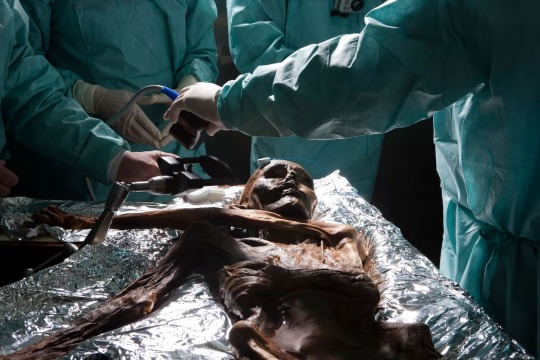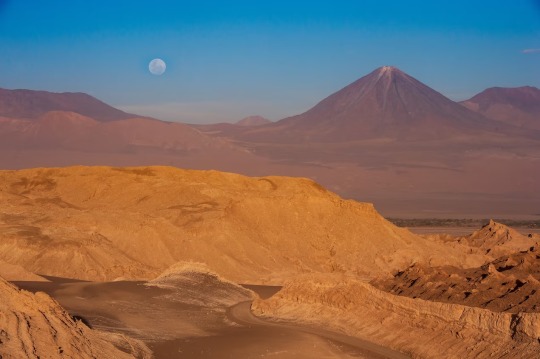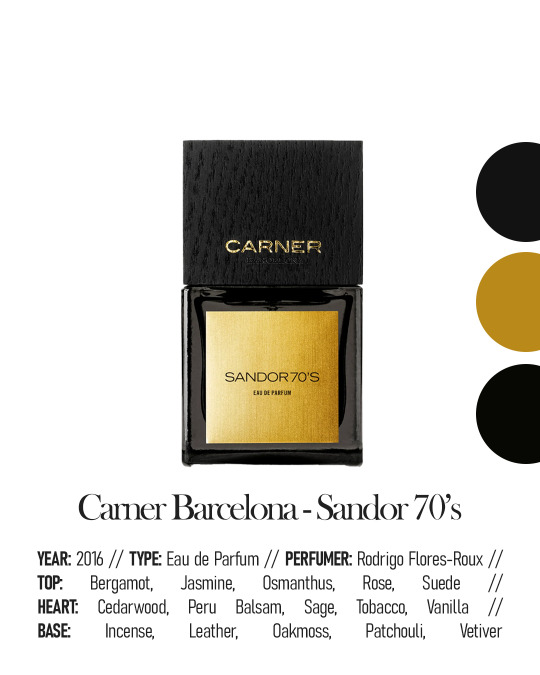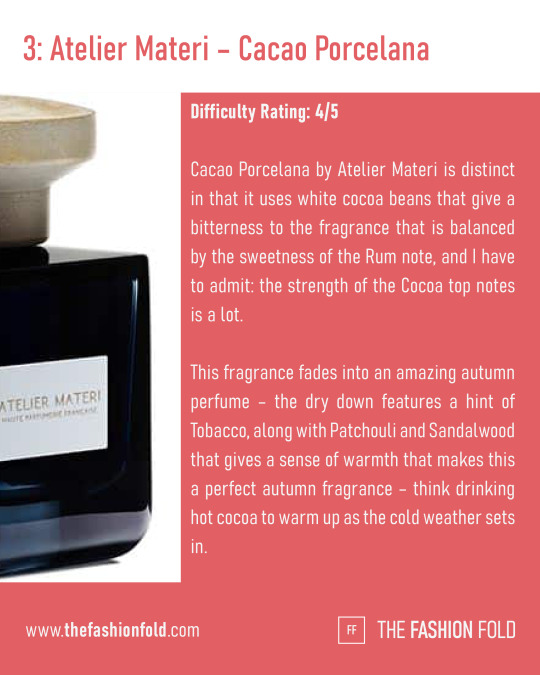#dried chiles
Explore tagged Tumblr posts
Text

#chiles#chart#fresco#seco#jalapeno#chipotle#dried peppers#poblano#ancho#chilaca#pasilla#anaheim#colorado#mirasol#guajillo#serrano#chile#bola#cascabel
41 notes
·
View notes
Text
got lids for all the little jars (fucked up and got the wrong number of lids when i bought the jars) (waited 3 years to fix my mistake) so now all the spices can be consolidated into same size containers so they all fit now in the same drawers
#why do i have white cardamom? what's mace's point? what do i use kala jeera for?#they all still smell strong so w/e#there are 17 little jars of chile powders and flakes#not to mention another 8 or so boxes of whole dried chiles#i wish i had a cute food tag
7 notes
·
View notes
Text

Some perfumes make me want them simply for the bottle - this is Voodoo Chile by Dries Van Noten.
I've picked out five brands with beautiful bottles and chosen three fragrances from each brand, read more here.
Image by The Fashion Fold
#dries van noten#voodoo chile#perfumes#perfume notes#perfume#fragrance#fragrance notes#fragrances#the fashion fold#fashion blog#perfume blog#eau de parfum#parfum
3 notes
·
View notes
Text

2 notes
·
View notes
Text

Brain samples are taken from the Copper-Age Mummy Ötzi, who was encased in ice shortly after death. This Natural Mummification preserved the body for some 5,000 years before its discovery in 1991. Photograph By Robert Clark, National Geographic Image Collection
These Mummies Were Made … By Accident?
Freeze-dried, salted, or buried in a bog: Thousands of years before humans intentionally mummified their dead, nature took care of it for them.
— By Elise Cutts | August 7, 2023
A mummy isn’t exactly something one would expect to make by accident.
Left to nature, a human body would usually be reduced to bones within a few years. Mummy-making cultures like the ancient Egyptians were only able to stave off the inevitable thanks to complex funerary practices involving all manner of specialized tools, chemicals, and procedures.
But there are paths to mummified eternity that don’t involve canopic jars, natron salts, or brain-removing hooks. In fact, some of the oldest Egyptian mummies were likely accidents, says Frank Rühli, director of the University of Zurich’s Institute of Evolutionary Medicine and head of the Paleopathology and Mummy Studies Group.
Buried in shallow graves, bodies can be naturally preserved for thousands of years by the dry heat of the Sahara’s desert air and sand. Rühli says he believes this could have inspired ancient Egyptians to start mummifying their honored dead.
Hot deserts are just one of many environments in which corpses naturally mummify. Scientists explain how environments ranging from bogs to icy mountaintops can stave off decay and—with a bit of luck—mummify bodies.
Deserts
The Egyptians aren’t the only desert culture known for their mummies. The Chinchorro people of northern Chile started to intentionally mummify their dead about 2,000 years before the Egyptians—and thousands of years before that, the Atacama Desert was doing it for them.
“One of the things that's interesting about the Chinchorro mummies is that some of them were intentionally prepared, while other were naturally mummified,” says physical anthropologist Bernardo Arriaza of the University of Tarapacá in Chile, who spent his career studying the Chinchorro mummies.
A bone-dry corpse, perhaps ironically, will likely leave more than bones.

A Landscape of the Desert! The Atacama desert plateau is one of the driest places in the World. Mummies have been found here that predate ancient Egypt’s by 2,000 years. Photograph By Naftali Hilger, Laif/Redux
Decay is a biological process and without water, biology can’t work. This is why deserts preserve bodies so well and why Egyptian and Chinchorro mummification practices involved steps to dry out the body.
The oldest Chinchorro mummy, Acha Man, was naturally preserved by the desert for more than 9,000 years. Natural mummies have been found in deserts around the world. Among the most well-preserved are the Tarim mummies of Xinjiang, China, who were buried in boat-shaped coffins up to 4,000 years ago in the Taklamakan Desert.
Salt
For a handful unfortunate Iranian miners caught in cave-ins at the Chehrabad salt mine, salt did the job just as well as deserts.
"They were working in the salt mine and then it collapsed,” says Rühli, who studied the mummies. This actually happened multiple times—at least twice, says Rühli—over about 1000 years, entombing young men separated from one another by centuries in the salt they’d come to mine. Though the weight of the salt crushed the miners, flattening their corpses, the salty rock drew the water out of their bodies and mummified their squashed remains.
Salts in the dry soils of the Atacama Desert also helped preserve the Chinchorro mummies, says Arriaza. The soils are rich in nitrate compounds, nitrogen, potassium, sodium, calcium. “Mostly salts,” he says. “That's going to help dehydrate the body.”
Ice
Removing the water from a corpse isn’t the only way to stop decay. Low temperatures slow down most biological processes, and freezing a body completely can keep it from rotting for thousands of years.
Pathologist Andreas Nerlich of the Munich Klinik Bogenhausen studied Ötzi, a 5,300-year-old ice mummy who was found poking out of melting glacier ice in the Ötztal alps near the Austrian-Italian border. “They're preserved as long as the ice is there,” he says of mummies like Ötzi.
While “very rare,” adds Nerlich, ice mummies like Ötzi can be remarkably well-preserved compared to dehydrated mummies. That’s because dehydration shrivels and distorts tissues, but frozen organs mostly keep their shape.
Permafrost, earth that remains frozen year-round, can also mummify. One Siberian mummy, the 2,500 year-old Ice Maiden, was quite literally frozen in a block of ice after her burial chamber flooded and the water quickly froze. Because her burial chamber was constructed from permafrost earth, the ice that formed inside never melted.
Freeze-Drying
Combining cold and dry conditions can mummify bodies even when it’s not consistently chilly enough to keep a body frozen year-round. That’s what happened to a handful of Thule Inuit women and children in Greenland. They were naturally mummified in their graves after their deaths, likely caused by famine or disease, in the 15th and 16th centuries.
It’s a bit like natural freeze-drying, says paleopathologist Niels Lynnerup of the University of Copenhagen, who studied the mummies.
“Even though it's very cold in Greenland, it's not like it's in the high Arctic with permafrost,” he says. The bodies were buried under rocky covers or cairns, so “they still had wind blowing through.” The wind desiccated the bodies and, combined with the bacteria-slowing effect of cold temperatures, mummified them.
Many of the Inca mummies discovered high on Andean mountaintops were preserved by freeze-drying, too. The exceptionally well-preserved Maiden of Llullaillaco, the mummy of a teenage Inca girl left to succumb to cold on an Andean mountaintop as a sacrifice, is a unique case as she was frozen solid.
Even the conditions in cool, dry crypts can sometimes preserve remains in a similar way so long as bodies are either well-ventilated or kept under airtight conditions after being dried out, says Nerlich. Several natural mummies in crypts weren’t entirely accidents. One Upper Austrian mummy known as the Luftg’selchter Pfarrer was intentionally stuffed with water-absorbing materials and treated with salts to delay decay temporarily before he naturally mummified in his crypt.
Bogs
Natural mummification almost always involves somehow getting rid of water, either by removing it entirely or turning it into ice. So may be a bit surprising that wet, swampy bogs can preserve human remains for millennia.
The oldest bog mummy is Cashel Man, who was probably killed in a sacrifice around 2,000 B.C. His body was naturally mummified because of the unusual chemical conditions in bogs.
“There are several factors which cause human remains to be mummified in bogs,” says archaeologist Isabella Mulhall of the National Museum of Ireland. “The lack of oxygen, the cool dark environment… the [acidity] levels of the bog also has a role to play.”
A type of moss often found in bogs also helps mummify bodies, Mulhall adds. Sphagnum moss releases an acidic sugary molecule called sphagnan, which takes up the nutrients that would otherwise nourish microbes that cause decay. This helps mummify corpses—though sphagnan also leaches the calcium out of bones, weakening them.
The acidic fluids in bogs chemically alter the body, not unlike leather tanning or pickling. That’s why most bog bodies, no matter how they looked in life, have dark, leathery skin and bright red hair.
Many bog bodies appear to have met rather violent ends—a fate shared with many other natural mummies. But because luck happened to preserve their bodies, the victims of these ancient tragedies can still tell scientists about themselves and their societies. The same processes that mummify human skin and organs can also sometimes preserve undigested food in the stomach, blood, traces of disease-causing microbes, and even clues about the ecosystems and climates that ancient people lived in.
“In a sense,” says Arriaza, “all these ancient remains are time capsules.”
#Science#Copper-Age Mummy Ötzi#Natural Mummification#Robert Clark#National Geographic Image Collection#Freeze-Dried#Salted#Elise Cutts#University of Zurich’s Institute of Evolutionary Medicine#Paleopathology#Frank Rühli#Egyptians#Chinchorro people of Northern Chile 🇨🇱#Atacama Desert 🐪 🌵#Physical Anthropologist Bernardo Arriaza#University of Tarapacá Chile 🇨🇱#Egyptian & Chinchorro Mummification Practices#Acha Man#Taklamakan Desert#Chehrabad Salt Mine#Nitrogen | Potassium | Sodium | Calcium | Salts#Pathologist Andreas Nerlich | Munich Klinik Bogenhausen#Permafrost#Niels Lynnerup | University of Copenhagen#Thule Inuit Women & Children | Greenland 🇬🇱#Isabella Mulhall | The National Museum of Ireland 🇮🇪#Cashel Man
2 notes
·
View notes
Text
Red lentil dal with potato and fennel
Via Ottolenghi Comfort. Serves 6 2 tsp black or brown mustard seeds 2 tsp cumin seeds 2 tsp fennel seeds 1 tsp Nigella seeds (or black sesame seeds) ½ tsp fenugreek seeds 3 whole dried red chilies 3 garlic cloves, peeled and left whole 1/3 oz / 10g ginger, peeled and roughly chopped 1 small, hot green chile, roughly chopped One onion, roughly chopped (mounded 1 cup / 180 g) 4 tbsp /…
#chile#cilantro#coconut milk#dried red chile#fennel#ginger#moong dal#potatoes#red lentils#soups/stews#tomatoes#vegetarian
0 notes
Text
I should've added a chile toreado to thisss
1 note
·
View note
Text
Taiwanese Meefun
Chef’s Notes: I quite enjoy this! The chile oil at the end is a necessity! And I truly adore the noodles; the thin noodles make it feel exciting for me. And the sauce gives them such a wonderful flavour.
Eat with chopsticks. It enhances the experience.
I'm literally in heaven with this dish. The mouth feel of the noodles is seriously top notch.

Ingredients
8 ounces baked or smoked tofu, cubes or matchsticks
5 oz to 8.8 oz dried rice vermicelli
I only had an 8.8 oz package. If you have this size, double the broth.
1 oz dried shiitake mushrooms
I used fresh (I had 1 cup cooked & frozen?
1 tbsp + 3 tbsp vegetable oil
2 eggs, lightly beaten
2 large shallots, thinly sliced
toasted sesame oil
Kosher salt
3 carrots, cut into thin matchsticks or shredded (about 2 1/2 cup)
1/4 small green cabbage, shredded (about 2 1/2 cup)
3 tbsp soy sauce
1 1/2 cup vegetable or chicken broth
(opt.) 1/4 cup fresh cilantro, roughly chopped
Lime juice
Chile oil, for serving
Instructions
0. If necessary, start your work on baking tofu. Do the rest as this goes
1. In a medium bowl, cover rice vermicelli in cold water and soak until softened, 5 to 10 minutes. Drain and set aside.
2. If necessary, prepare shiitake
Dried mushroom: Soak dried shiitake mushrooms in warm water until hydrated and softened, about 10 minutes, then drain. Slice to 1/4-inch thick.
Fresh mushroom: Slice to 1/4-inch thick slices
3. Heat 1 tbsp oil and a few dashes of toasted sesame oil in a large, deep skillet over medium heat. Add beaten eggs and swirl to create an even layer. Cook until eggs are set and cooked through, about 1 minute.
4. Transfer the cooked eggs onto a cutting board. Let cool slightly, then cut into matchsticks. Set aside.
5. Return the skillet to the stove and raise heat to medium-high. Add remaining 3 tablespoons vegetable oil, the shallots, and shiitake mushrooms. Season with salt. Cook, stirring frequently, until the edges of shallots begin to brown, 3 to 4 minutes.
6. Add carrot, season with salt. Cook, stirring frequently, until softened but still crisp, 1 to 2 minutes.
7. Add cabbage, season with salt, and cook, stirring frequently, until slightly wilted, 1 to 2 minutes.
8. Add tofu, soy sauce, drained rice vermicelli, and broth. Cook, stirring frequently, until the noodles absorb the water, 5 to 6 minutes.
9. Season with salt, white pepper, and a dash of lime juice. Stir in reserved eggs to combine.
10. Serve each serving topped with cilantro, chile oil, and a few dashes of soy sauce
#stovetop#entree#baked tofu#dried rice vermicelli#shiitake mushroom#vegetable oil#egg#shallot#toasted sesame oil#salt#carrot#green cabbage#soy sauce#vegetable broth#chicken broth#cilantro#lime juice#chile oil
0 notes
Text

#Dry Fruits Online store in india#Dried Fruits Online Store in India#buy dry fruits online india#buy walnuts without shell#buy walnuts with shell#roasted & salted almonds badam#dry fruits online shopping#anjeer price online#dry anjeer online at lowest price#makhana online price#buy roasted and masala dry fruits#buy roasted and salted almonds#kashmiri badam giri online at best price#roasted and salted almonds online#online whole cashew nuts at best price#Buy Chile Walnut Kernels Online at Best Price#akhrot giri online price#fresh anjeer online price#Dry fruits online#anjeer online#Dry fruits and nuts price online#cheapest dry fruits online
0 notes
Text
S2E3: "High Hopes"
Appetizer Ingredients: Calamari, Brussel Sprouts, Asian Pears
Entree Ingredients: Bison, Dried Mango, Leeks, Belgian-Style Ale
Dessert Ingredients: Ancho Chiles, Semi-Sweet Chocolate, Plums
Judges: Marc Murphy, Amanda Freitag, Scott Conant
Chefs: John Lawson, Michael Ferraro, David Kirschner, Nicole Puzio
#food network#chopped#John Lawson#Michael Ferraro#David Kirschner#Nicole Puzio#Marc Murphy#Amanda Freitag#Scott Conant#Calamari#Brussel Sprouts#Asian Pears#Bison#Dried Mango#Leeks#Belgian-Style Ale#Ancho Chiles#Semi-Sweet Chocolate#Plums
0 notes
Text

Steak Fajitas with Grilled Onion and Peppers
There's not much else on my mind when I develop a craving for beef fajitas till I eat them.
Mesquite wood was used for cooking. In addition to providing a very strong and unique flavor, mesquite also yields the hottest cooking coals. At home on the backyard barbecue using a mix of mesquite bits and charcoal briquets that can be purchased at any hardware store.
If you can, I suggest looking for sun-dried chile powder because it's a huge improvement. Consider the flavor difference between sun-dried tomatoes and oven-roasted dried tomatoes to understand that this is sweeter and less bitter than the usual mechanically dried chile powder. Internet sourcing is fairly simple.
After taking the vegetables off the grill, they should still have a lot of bite; you want the soft tortillas, crisp toppings, and tender meat to all have different textures. Sprinkle with fresh lime juice.
As Americans, we tend to look at Mexican food as nachos, which is not Mexican food really - they don't eat them.
- Anthony Bourdain
#food#mexican cuisine#american cuisine#tex-mex#homemade#home cooking#home cooked meal#meat dish#grilled meat#beef dish#my photography#food photography#original photographers#thelcsdaily#original photography
271 notes
·
View notes
Text






Best niche perfumes for 2025 by season - difficulty rating included!
See the full list at https://www.thefashionfold.com/best-niche-fragrance-for-2025-by-season-difficulty-rating-included/
#the fashion fold#perfume#fragrance#niche fragrance#niche perfume#autumn fragrance#fall fragrance#autumn perfume#fall perfume#atelier materi#cacao porcelana#dries van noten#voodoo chile#carner barcelona#sandor 70's
1 note
·
View note
Text
Also great for warm dishes, such as stir fries.
#vinaigrette#black vinegar#fresh ginger#shallots#green onions#spring onions#scallions#dried chile pepper#oil#star anise#sichuan peppercorns
1 note
·
View note
Text
Toast dried chilis like California chilis or something in the oven for like 3 minutes at like 350-400 F or something or until they’re fragrant then remove the pith and seeds and stems maybe leave some of the pith if you want it more spicy idk then pour some boiling water over them and let them soak in the hot water for 1-3 hours and then put them in a blender with the water you soaked them in then you’ve got a sauce pot right you put the blended chiles in there with some tomato sauce or paste and some water idk depends on how thick you want it and then you add a generous amount of cumin, oregano, garlic powder, salt, and pepper to it and simmer for like 10 min
You can freeze that in like 1 cup measurements in cups or bags or something. Makes for easier prep later.
Now what you do next is you get chicken thighs like enough for 3-4 people or more idk you might want leftovers, you cook the chicken in salted water or broth in a wide pan until they’re cooked through and then you shred the chicken with a fork and then you add the sauce and cook off almost all of the remaining liquid and then you make tacos out of that and it tastes really good
264 notes
·
View notes
Text
Three Cup Chicken (NYT)
Via NYT Cooking. (FYI: I added daikon to the stirfry for some veg.) 3 tablespoons sesame oil 1 2-to-3-inch piece of ginger, peeled and sliced into coins, approximately 12 12 cloves of garlic, peeled 4 whole scallions, trimmed and cut into 1-inch pieces 3 dried red peppers or 1 teaspoon red-pepper flakes 2 pounds chicken thighs, boneless or bone-in, cut into bite-size pieces 1 tablespoon…
0 notes
Text
Told my mom I wanted to make enchiladas, and she proceeded to mail me two pounds of dried chiles 💕

This would have cost $1000 dollars at the neighborhood Whole Foods
23 notes
·
View notes